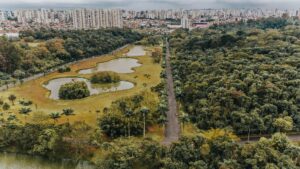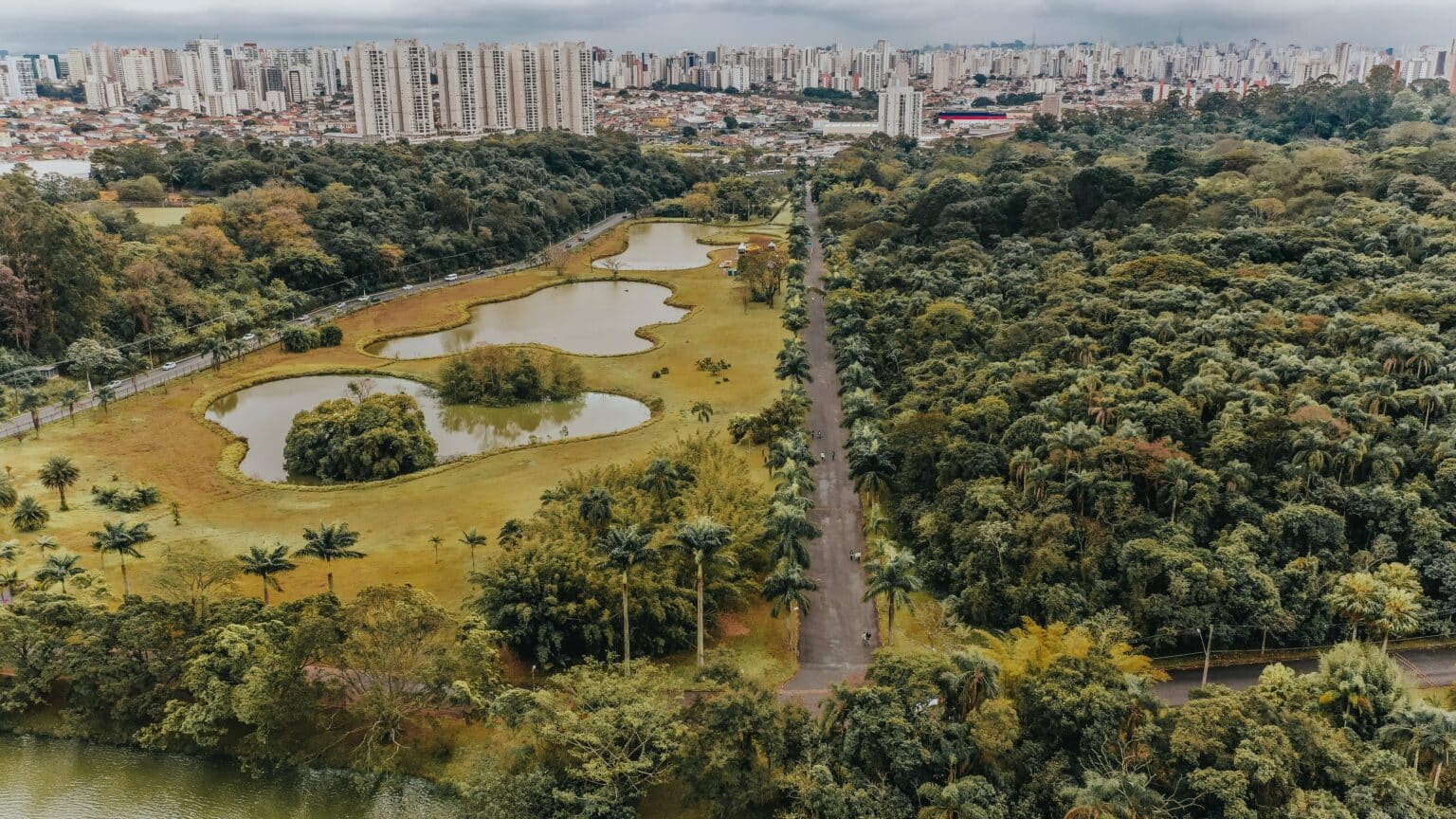Everybody knows that if you are ever in New York City, you must visit Central Park! But have you ever wondered what is there to see while you’re there and do not know where to start? Well, our NYC Spotters got you covered!
Central Park is a beautiful oasis in the heart of New York City, offering visitors and locals alike a peaceful escape from the hustle and bustle of urban life. While many of the park’s most famous attractions, such as the Bethesda Fountain, are well-known and widely visited, there are plenty of lesser-known spots to explore.
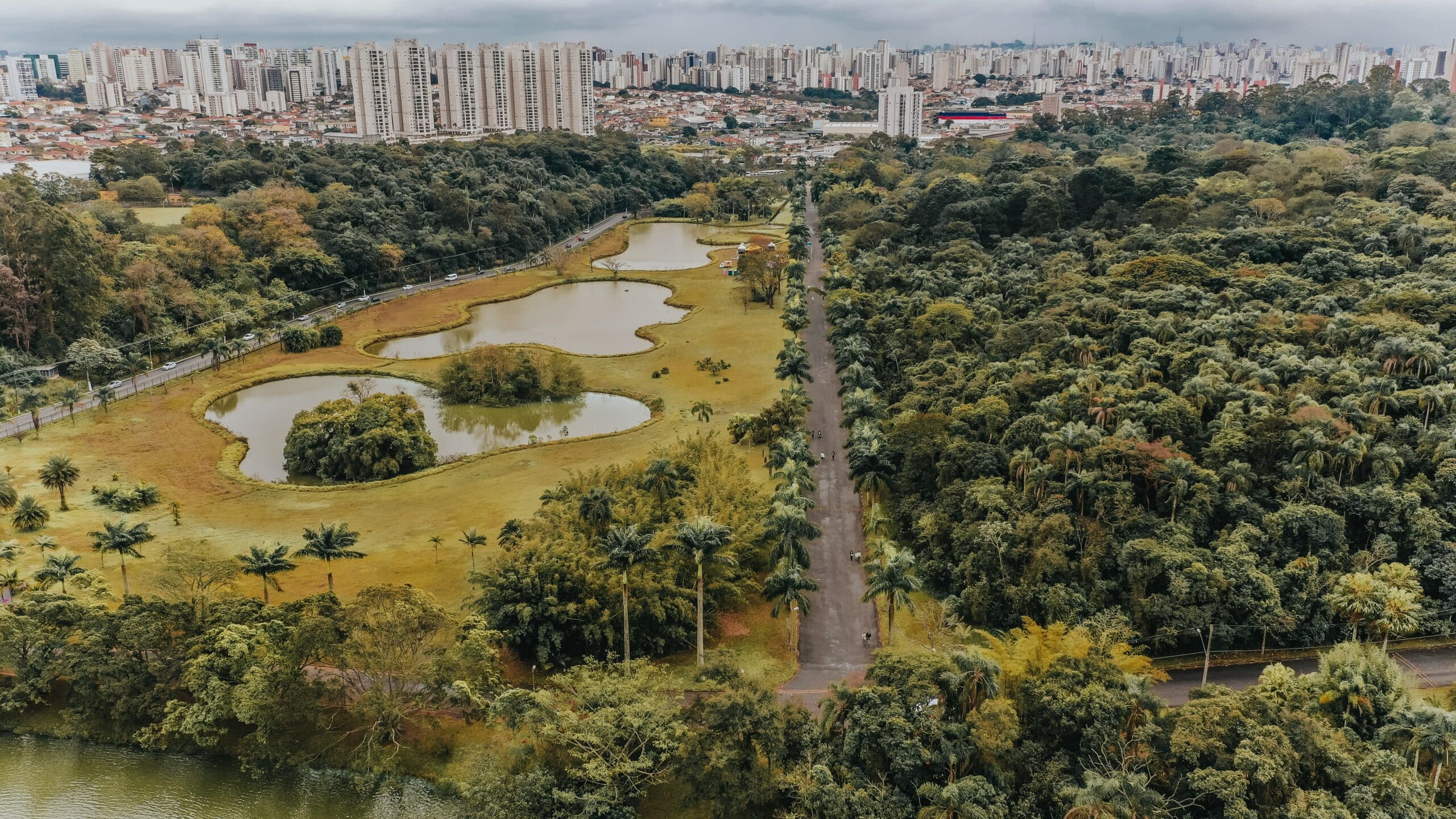
In this blog post, we’ll be highlighting some of Central Park’s best kept secrets – those locally spotted hidden gems that are off the beaten path, but well worth a visit. From tucked-away statues to stunning bridges, these are the spots that locals know and love, and that visitors won’t want to miss. So grab a picnic blanket, a good book, and some comfortable walking shoes, and let’s dive into Central Park’s hidden treasures.
Bow Bridge – Central Park
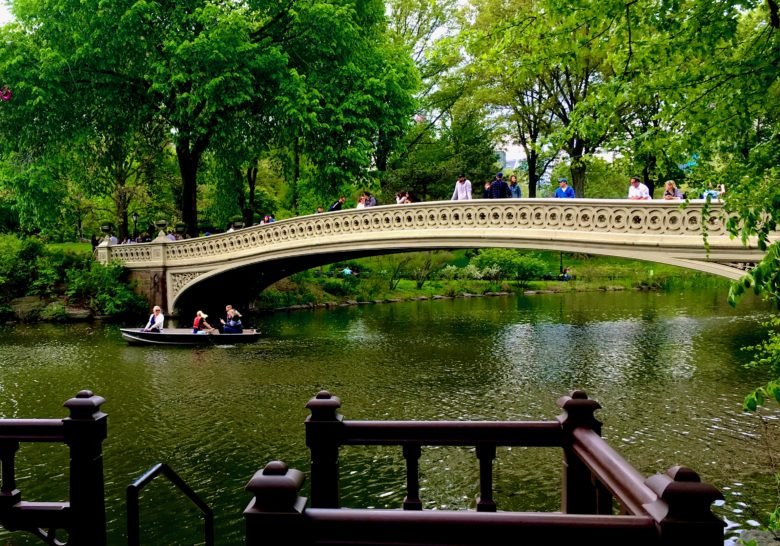
Geoffrey Dunbar: The arc of Bow Bridge is the muse to a swoon, a breath stealing swoop, an archer’s bow inducing soft strolls and big questions like “Will you marry me?”. Built between 1859 and 1862 during the American Civil War, it was the second cast-iron bridge in the USA (same iron as used in a Wagner American frying pan).
Central Park Zoo – Little zoo in the big city
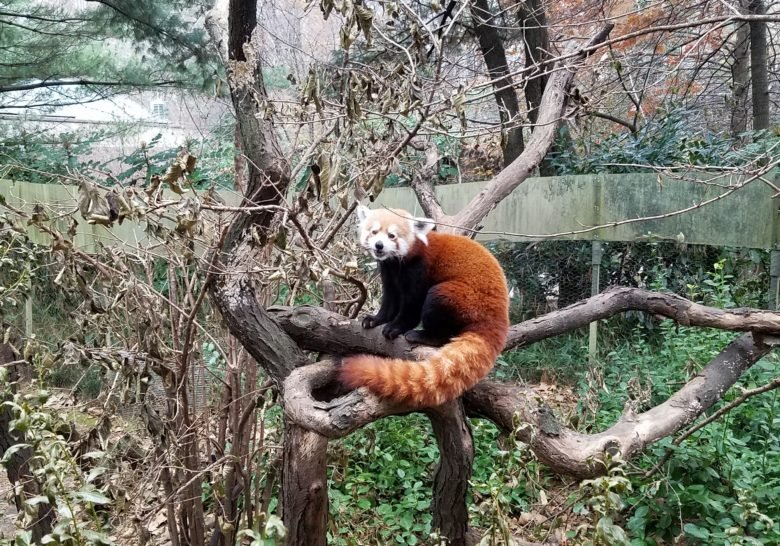
Paula Ryszkiewicz: The Central Park Zoo is located in the southeast corner of New York’s Central Park along Fifth Ave. Its small size makes it the perfect place to spend an hour or two while exploring the park.
As you enter the zoo, you’ll be immediately drawn towards the sea lions. Their lively barks and acrobatic flips always bring a crowd to the oval tank in the center of the zoo. Their feeding times at 11:30am, 1:30pm, and 3:30pm are the best times to visit. This is when the sea lions are the most active, and you’ll also get a chance to learn about these amazing animals from their zookeepers!
Delacorte Music Clock – Central Park’s hourly tunes
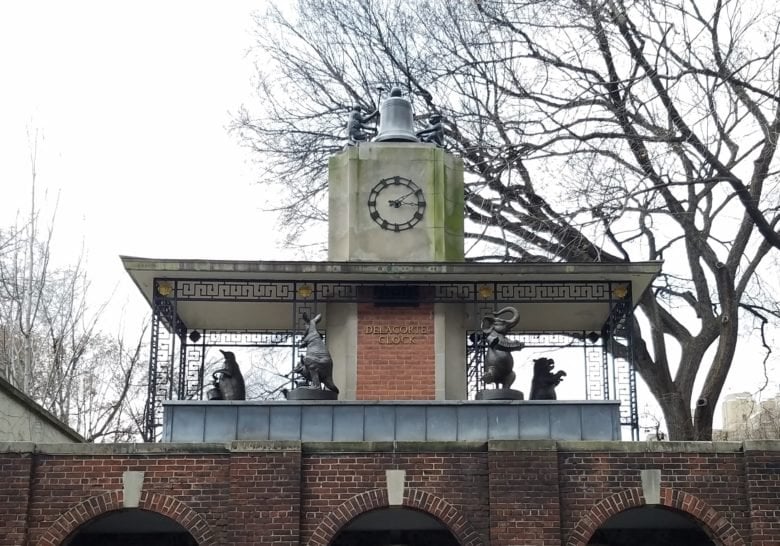
Paula Ryszkiewicz: Perched above a brick passageway outside the Central Park Zoo in New York, you’ll find the Delacorte Music Clock. This musical clock is a must-see if you’re exploring the park with children. Even adults will delight in its whimsical charm.
The clock was created in 1965, modeled on European music clocks. Every hour, the clock springs to life as statue animals appear to dance around the clock, playing their instruments to the tune of nursery rhymes. Hickory Dickory Dock, Frere Jacques, and Singing in the Rain, are among the list of 32 songs played year-round. On the half-hour, the clock plays shorter tunes. The clock features a goat playing the pipes, a kangaroo playing the horns, a penguin on drums, a bear with a tambourine, and a hippo playing the violin. A pair of monkeys sit at the very top, poised to strike a bell to mark the hour.
Central Park Benches – Poignant inscriptions
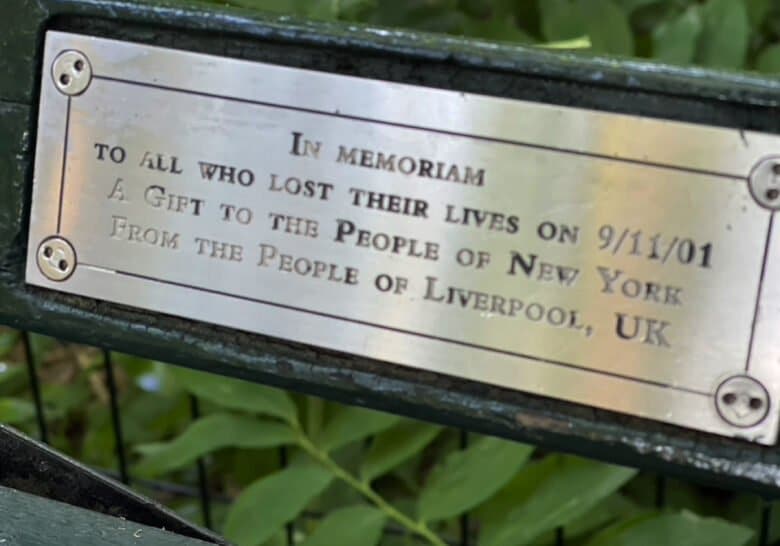
Geoffrey Dunbar: Entering Central Park through the Women’s Gate (72nd Street West), then following the sidewalk edged on either hand with benches where sitting idlers observe your passing, then between and under the Katsura Trees (which in the autumn smell of caramelized sugar) framing the pathway entrance to Strawberry Fields, you will encounter even more benches with many more idlers listening to buskers like The Meetles, all inspired by The Beatles and the lyrics of John Lennon. Of course, it was Yoko Ono who brought this shrine into being.
Central Park benches—apart from their comfort—are known for their commemorative plaques. Park lovers have embraced the idea to the degree that it is uncommon to find a bench without a plaque.
Cleopatra’s Needle
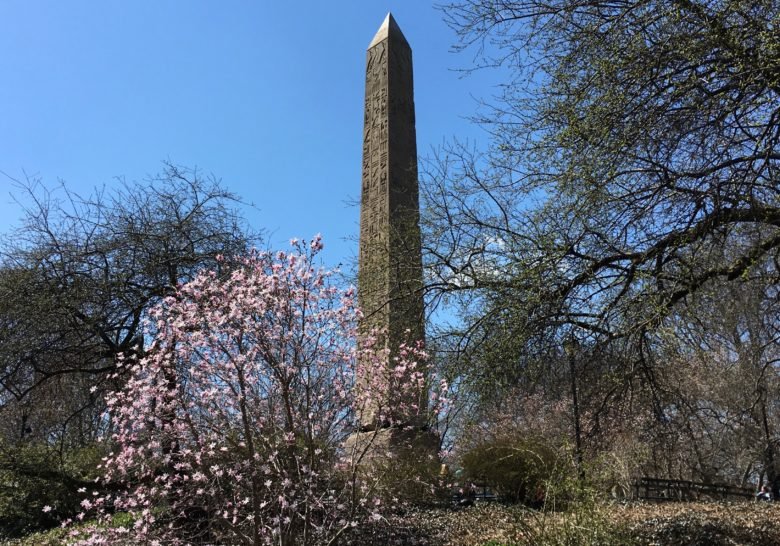
Geoffrey Dunbar: To the west of the Met Museum, directly up the hill as seen from the Petrie Court Café therein, rises the 70’ obelisk named ‘Cleopatra’s Needle’, the lonely twin of its sibling living in London (on a bank of the Thames) and the cousin of the more famous third, in Paris (at Place de la Concorde).
The twins were crafted around 3,500 years ago each from a single piece of more than 200 tons of Aswan red granite, similar in colour to the sarcophagi in Grant’s Tomb.
Following their repositioning cruise down the Nile thousands of years later, their second purpose was to honour Caesar Augustus,; others claim the rogue Marc Antony; more others, Julius Caesar. Who knew?
Then, about 140 years ago, with much hoo-ha, one was moved from Egypt to New York where it was re-erected in Central Park. Large crowds gathered. Commemorative objects were created. It was a big tsimmes.
Fort Clinton – American War Fortification
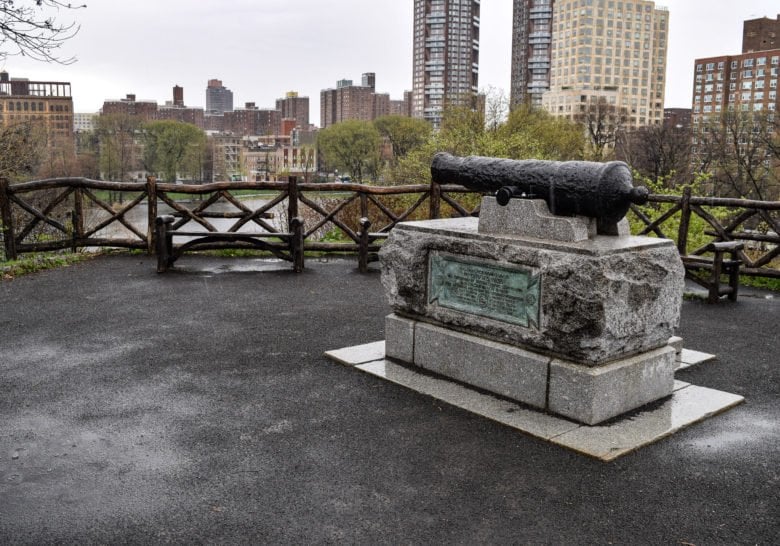
Christian Neely: Though the Revolutionary War and War of 1812 structures no longer stand here, Fort Clinton is one of three visible fortifications in northern Central Park. Currently, this spot serves as a scenic overlook out over the Harlem Meer and out over the neighborhood of Harlem itself.
A plaque nearby describes the history of the location, as well as providing artistic renderings of what the site would have looked like around the time it was built. The site was first used as a British fortification after the invasion of Manhattan, however, the Americans built a new edifice after the British left in order to protect from further invasions.
Blockhouse #1 – 1800s fortification
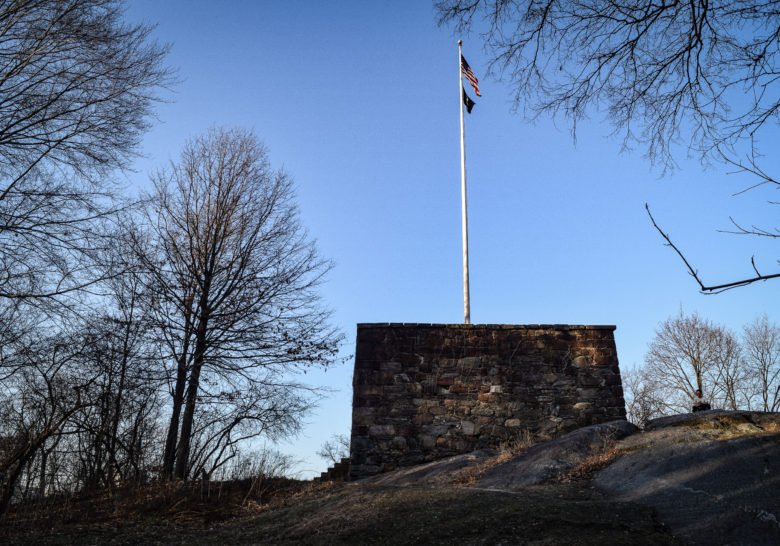
Christian Neely: This small, The Blockhouse, relatively unknown structure is one of three visible fortifications in northern Central Park dating back to the Revolutionary War and the War of 1812. This particular edifice can be a bit tricky to locate at first, due to its location in the North Woods near the edge of the park. The easiest method to find the Blockhouse is to enter the park from the end of Adam Clayton Powell Jr Blvd and look up the hill. The Blockhouse is a small, square fortification with a flagpole rising above it.
Heckscher Field
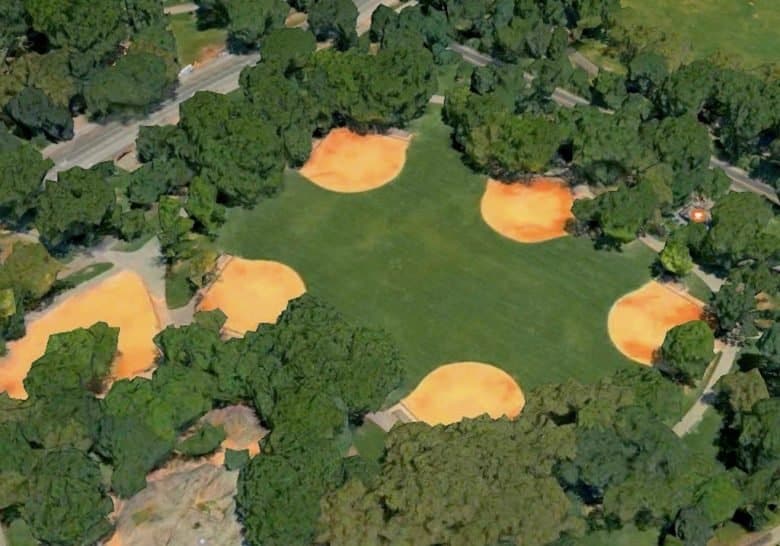
Geoffrey Dunbar: In Central Park, within easy walking distance from Columbus Circle, Heckscher Field is a famous ball field created for the American game of softball, a version of baseball played on a smaller field, with a bigger ball. On it are five carefully interwoven ‘diamonds’, the word used to describe the shape made by the configuration of the bases set on the green, from the spectators’ view, as a square en pointe. In this case the home bases are strewn to the farthest reaches of the field, forcing the distant outfielders to play face to face, but in separate games.
Monumental Women
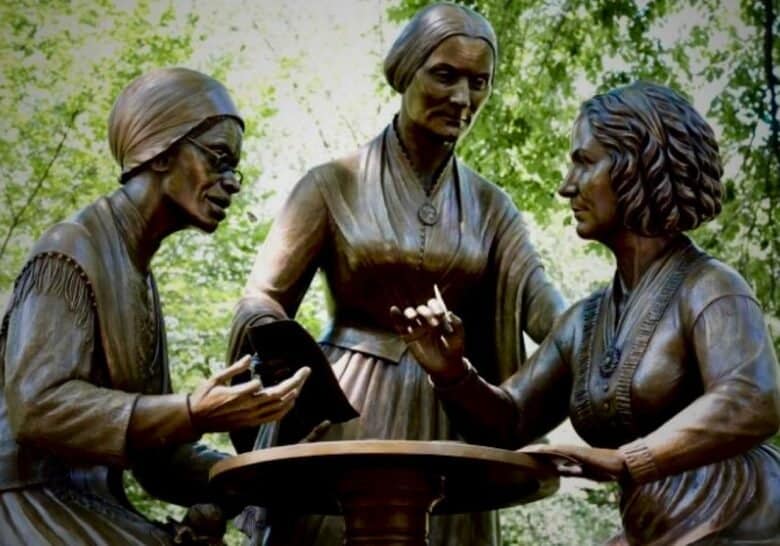
Geoffrey Dunbar: Women’s Rights Pioneers Monument (2020) is a monument depicting three US women, the first representation of real women in Central Park since its opening in 1858. (A non real-life example is José de Creeft’s wonderful Alice in Wonderland at the north end of The Conservatory Water).
Located on Literary Walk centred (east/west) in the park and leading south from Bethesda Terrace, it honours Elizabeth Stanton, Sojourner Truth, and Susan B. Anthony, each an especially important figure in the United States women’s equality movement.
Jackie O Reservoir – My favorite jogging spot
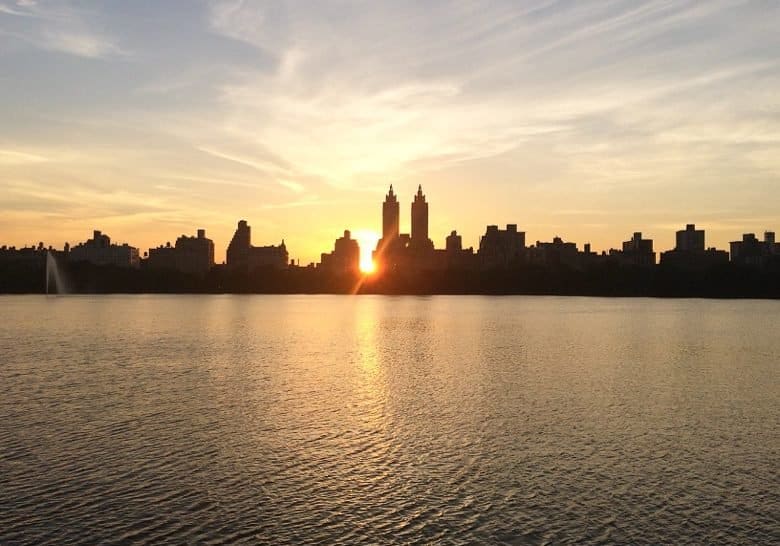
Victoria Yang: Whether you enjoy running, walking, or just taking in the views of New York City’s skyline, the Jacqueline Kennedy Onassis Reservoir is a can’t-miss spot in the city. The best time to go is just before sunset, when crowds gather at the 86th Street entrance of Central Park to watch the sun make its descent in the sky.
Surrounded by a 1.58 mile gravel path, the reservoir was Jackie O’s favorite jogging spot, hence the name. While the reservoir was built in 1862 to provide clean water for the city, nowadays it offers New Yorkers and visitors alike a quiet and beautiful communal spot.
Want to Discover More Hidden Gem Around NY? Check Out Our Full NY Guide!
